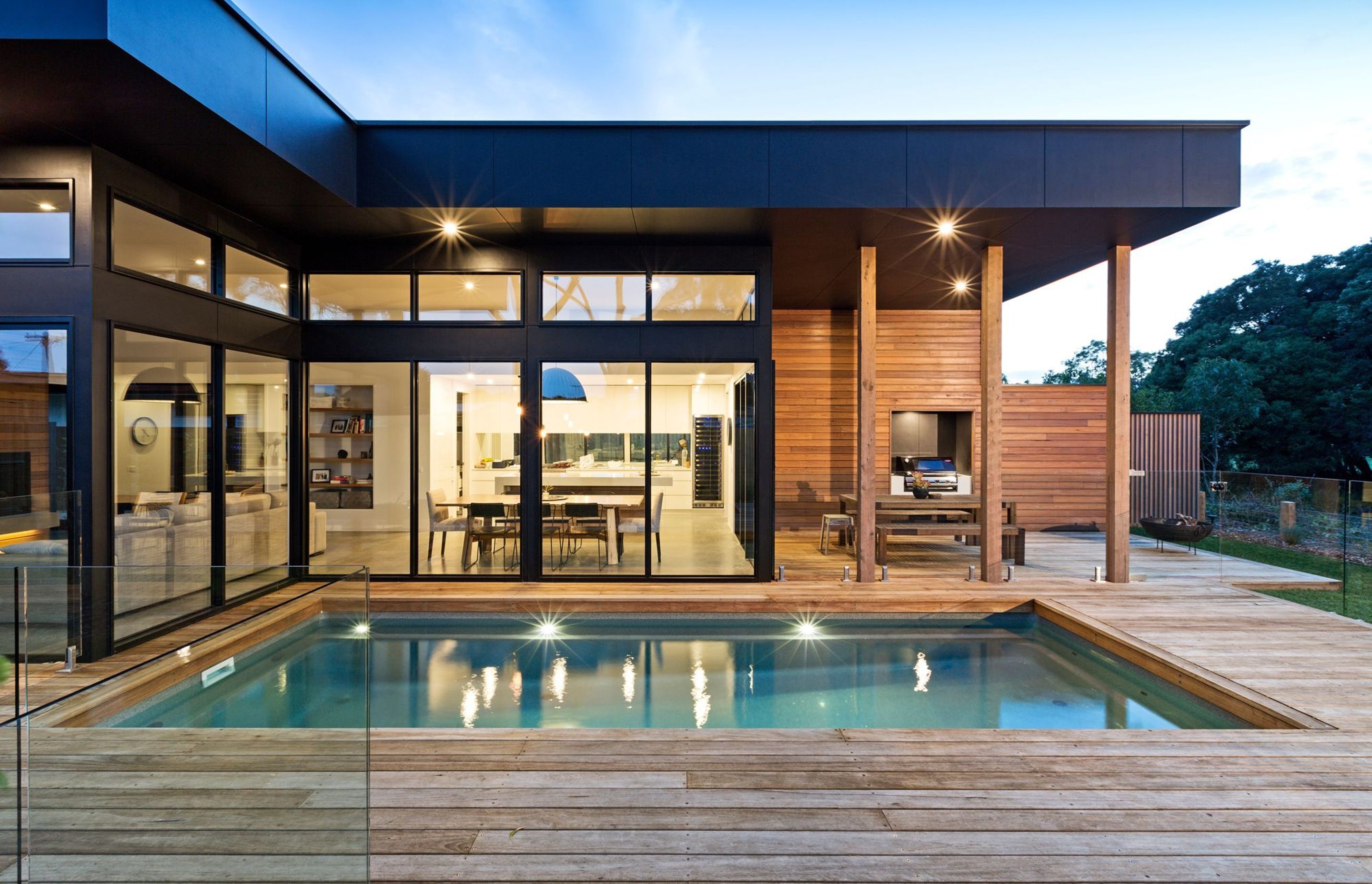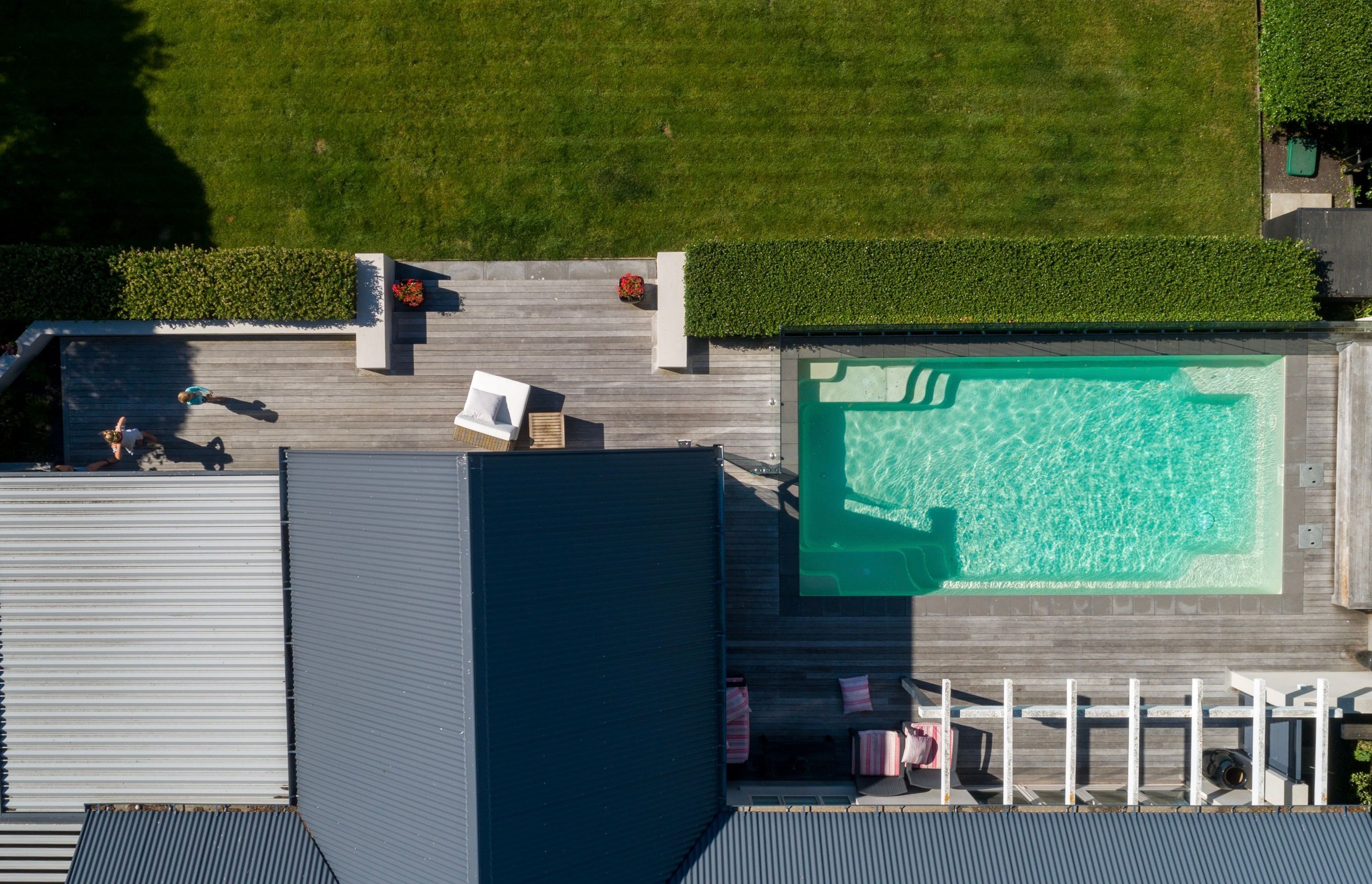What is a self-cleaning pool?
Written by
14 April 2024
•
5 min read

A swimming pool is a staple for every Australian home. It’s where the kids spend the summer and a place the whole family can enjoy time together. Spending the time and money that often comes with cleaning pools isn’t on anyone’s wish list.
A typical swimming pool holds approximately 40,000 litres of water and for that water to remain healthy, it has to be regularly circulated and must maintain the right chemical balance and sanitation levels. Unhealthy pool water can be the cause of earaches, illnesses and sore eyes, not to mention a green pool. Without the right technology and knowledge, this can diminish the fun of owning a pool.
The answer to this is a self-cleaning pool.
“The most common mistake people make when considering a self-cleaning pool is looking at it purely from a cleaning perspective,” says Anthony Cross, CEO at Compass Pools.
“A self-cleaning pool isn't just about getting rid of the leaves or the debris that falls into the pool. A self-cleaning pool is a pool that is easier to own, costs less money to run, has a more even water temperature from top to bottom, uses less chemicals, consumes less power and, overall, requires less input and effort from a pool owner to achieve balanced, healthy and safe water to swim in.”

This is achieved thanks to the optimum circulation a self-cleaning system generates.
A traditional pool is circulated by what is known as a one-suction, two-return approach where the skimmer box takes water from the surface, filters it and returns it to the swimming pool through eyeball jets.
“The problem with this approach is that the eyeball jets are usually about one and a half feet beneath the surface. So, is that filtration system taking the entire volume of water out of the swimming pool, treating it, filtering it and sending fresh water back into the pool? Or, does that system just take, say, the top third of pool water and circulate it over and over again?” says Cross.
“The answer to that can be found by putting your hand into the surface of a pool; if it’s warm and then you jump into the pool and it’s cold in the bottom half, it’s a telltale sign that the swimming pool is not circulating effectively. It means that the top layer of water, which is getting nice and warm from the sun, is getting treated over and over again, but it’s not mixing with the cold water down the bottom.
“It means you’ve got highly concentrated water with chemicals that has been highly filtered at the top of the pool, but the second you go down deeper, you’ve got murky water that hasn’t been treated.”
How does a self-cleaning pool work?
On the other hand, a self-cleaning pool system is focused on boosting circulation – achieved with a main drain on the pool floor.
“Instead of just taking water from the skimmer box, this also takes water from the drain in the pool floor. There are two points – one at the top and one at the bottom – that are taking all of the water out of the pool and sending it through the filtration and sanitization system, allowing fresh, clean water to flow through the eyeball returns.”
There are then also a series of jets on the pool floor that sit flush, and one by one, return the filtered water into the pool.
“The whole purpose of an in-floor cleaning system like Vantage, which is what Compass Pools use, is that we are taking the dirty water, we’re treating it and then we’re returning water through the pool floor as well as at the top,” says Cross. “It’s not instead of the traditional system, it’s as well as – we’re maximising circulation and making sure that fresh, treated water is getting to every nook and cranny of the pool.”
As well as cleaning the pool of debris, it ensures an even temperature right through. It also stops the top layer of water from being over-circulated and instead, distributes the chemicals throughout.
“That’s important because the biggest consumer of chlorine in a swimming pool is UV light. So, if it’s at the surface as opposed to being mixed throughout the whole pool, we lose a lot of pool chemicals to evaporation and burn off.”

The benefits of a self-cleaning pool
A self-cleaning pool requires fewer chemicals and less power, and it’s less likely to go green.
“When we call it a self-cleaning pool, that’s a little bit of an underservice," says Cross.
“The real reason you want to buy a self-cleaning pool is because it makes it easier to look after the water, it’s cheaper to run, it makes it cheaper to heat and you don’t need to buy any other equipment like robot cleaners.
“It simply is the ultimate way to own water.”

Every pool purchased from Compass Pools, including self-cleaning pools, contributes towards the company’s give-back initiative raising funds for the McGrath Foundation.
“When your Compass Pools dealer arrives with your new pool, you will notice that the exterior of your pool is painted pink. It’s our way of reminding you that you’ve made a difference. Every time someone chooses a Compass Pool, they are also choosing to support the McGrath Foundation, too,” says Cross.
Now close to reaching a total donation amount of $1M, it’s Compass Pools’ way of giving back.
“We may be a relatively small family-owned business, but we can and will make a difference.”
If you’re looking for a pool for your home that ticks all these boxes, get in touch with Compass Pools.